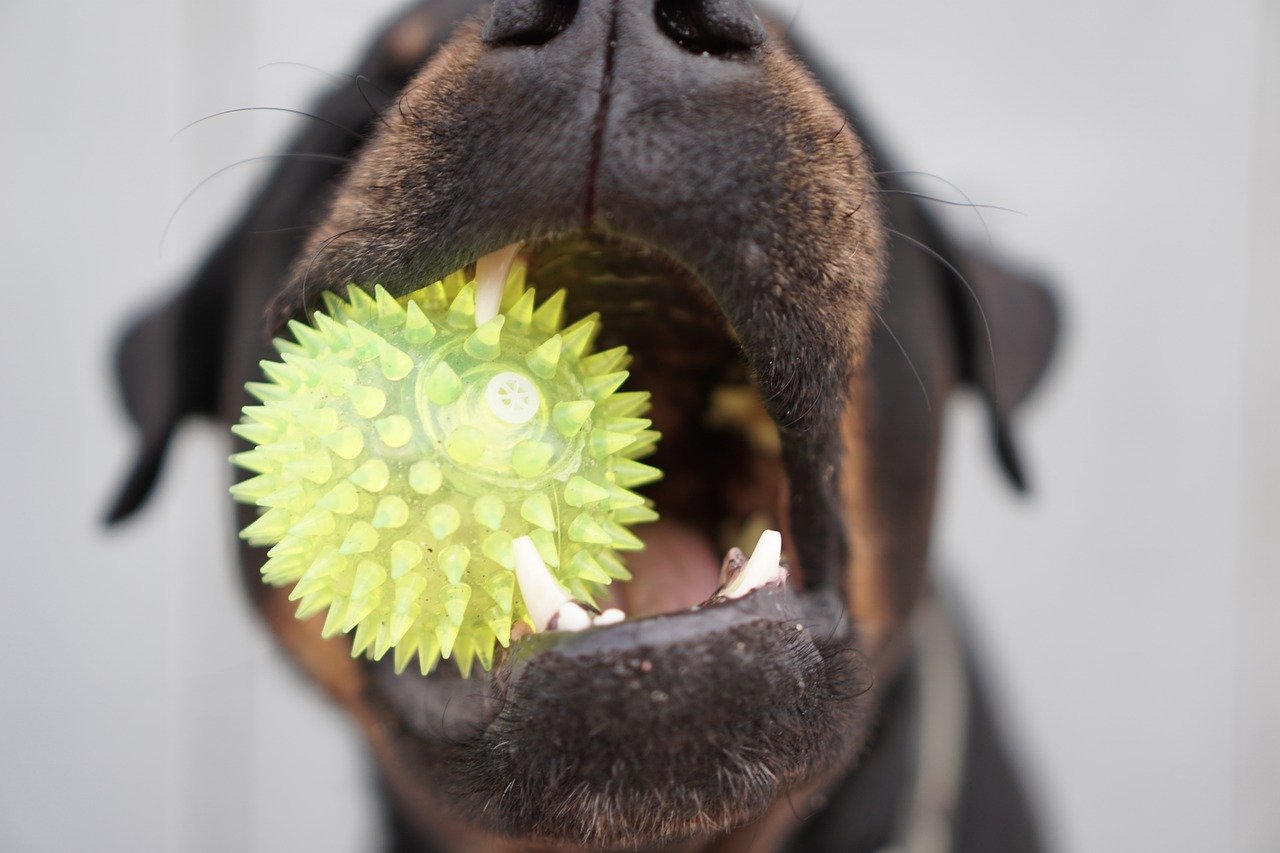A few months ago, I (Steph) noticed a very small irritated area above my dachshund Django's left eye. It seemed some hair was also missing from the spot. I quickly noticed a second small irritated area not far from the first on the left side of Django's head. At this point I began worrying, thinking Django might have a health condition causing these small abraded spots on his face.
The next afternoon, Django's veterinarian confirmed that Django was perfectly healthy, but he had a mature ear infection in his left ear. And the two irritated areas above Django's left eye? Apparently Django had been scratching his left ear and the surrounding area with his paw. The scratching is what irritated the skin, causing the two spots I saw the day before.
The crazy thing? Neither my husband Mike or I had noticed Django excessively scratching his ear in recent days. Sure, maybe a brief scratch here or there, but nothing that would prompt an urgent vet visit.
This was Mike and my first experience dealing with a serious ear infection in our adorable and hairy sausage dog, so we did a lot of research into canine ear infections. What causes ear infections in dogs? Aside from scratching, are there other canine ear infection symptoms to look for? And what are the most effective and safe treatment options? Here is everything you need to know.
Overview and Causes of Ear Infections in Dogs
Ear infection and inflammation in dogs, also known as otitis, are extremely common canine health problems.
Dog (and human) ears always have a low level of bacteria and yeast cells present. Otitis occurs when conditions allow these bacteria or yeast cells to thrive and overwhelm the ear canal, resulting in infection and/or inflammation of the ear.
There are three types of otitis. Otitis externa is infection and inflammation in the outer ear, also known as "swimmer's ear" in humans. This is the most common form of infection since dogs' outer ears are most exposed to water, bacteria and other foreign pathogens.
Otitis media occurs when there is infection and/ fluid buildup in the middle ear canal behind the ear drum. Otitis interna, the most severe level of infection, occurs when infection reaches the inner most part of the ear canal. The inner ear canal hosts our sensory and hearing organs; infection here can lead to vertigo, imbalance, and even deafness.
What causes ear infections in dogs?
These are the most common causes of ear infections in dogs:
- Excess moisture. One of the most common culprits of canine otitis is excess moisture left in the ear after swimming or bathing. Bacteria thrive in moist environments, and an overgrowth will lead to inflammation and infection. It's no surprise that water-friendly dogs who swim often (or get baths often) are more prone to ear infections.
- Allergies. Allergies to food or environmental elements (i.e. pollen, mold, dust mites, grass) can cause recurrent ear infections in dogs. If your dog is experiencing recurrent ear infections from a food allergy, typically removing the food allergen from his or her diet will help put a stop to the ear infections. Reactions to environmental allergens can often be addressed with canine allergy medicine. Please speak to your licensed veterinarian if you suspect your dog has a food or environmental allergy. Your vet can properly diagnose your dog's allergy and recommend the safest medicine or natural remedy for your four-legged family.
- Ear mites. Ear mites are mainly seen in kitties and puppies and mite infestations can lead to ear inflammation and infection. These tiny creatures also cause intense ear itching, so you will likely see your dog scratching his ear or rubbing his head on the floor if he has ear mites. Generally speaking, ear mites are very rare in dogs and puppies unless the animal has been in close contact with another animal with ear mites.
- Foreign material. Material trapped within the ear canal that is not cleaned out can lead to an infection over time. Consider cleaning your dog's ears at home on a regular basis to prevent the risk of ear infections. All you need is a quality ear cleaning solution (sold at most pet stores) and cotton gauze.
- Anatomical build. Dogs with big, floppy ears are more prone to ear infections than other dog breeds. These breeds include afghan hounds, basset hounds, beagles, cocker spaniels, poodles, and setters (to name a few).
Are ear infections in dogs common?
Yes, ear infections are extremely common in dogs. As mentioned above, otitis externa is the most common form of infection. Otitis externa occurs when the outer ear canal becomes infected and inflamed due to an overgrowth of bacteria or yeast.
Although every dog breed can develop ear infections, dogs with floppy ears (i.e. cocker spaniels, basset hounds, etc.) tend to be more prone to otitis.
Symptoms of Ear Infections in Dogs
How do you know if your dog has an ear infection? Look for these telltale symptoms.
- Head shaking or tilting
- Scratching and pawing at the ear
- Redness in the ear canal
- Brown, yellow, or bloody discharge in the ear canal
- Ear odor
- Visible discomfort, whining
- Vertigo and imbalance (signs of a potentially more developed and serious ear infection)
When to contact your veterinarian
If your dog is displaying one or more of these symptoms, please arrange a visit with your veterinarian immediately so he or she can be properly treated. Ear infections in dogs are fortunately very common and usually relatively easy to treat. With that said, it is important to not delay care and ensure your dog gets the proper treatment as soon as possible. If left untreated, ear infections can spread to the inner ear canal and potentially cause deafness, facial paralysis, and/or other serious health problems.
Treatment for Ear Infections in Dogs
Your veterinarian will likely clean your dog's infected ear thoroughly at your visit with a medicinal cleanser. Depending on the type and cause of infection, a cleaning may be all that is needed. Most likely, however, your veterinarian will prescribe a regiment of oral or topical antibiotics (to fight the infection) as well as corticosteroids (to quickly reduce inflammation, swelling, and pain).
Django was diagnosed with otitis externa, infection and inflammation of the outer ear. Our vet cleaned Django's left ear thoroughly and prescribed gentamycin, an antibiotic that fights bacterial ear infections in dogs. The gentamicin was in liquid form, and we applied the ointment directly into Django's infected ear canal.
In addition to gentamicin, other common topical antibiotics used to treat bacterial ear infections in dogs include mometamax, otomax, and tresaderm.
If your dog is diagnosed with a fungal or yeast infection, fungicide medicine will likely be prescribed. Per PetCareRX, "Itraconazole and Ketoconazole are commonly prescribed fungicides, and are very effective at clearing up excessive fungus or yeast."
Ear mites are treated with anti-parasitic medicine.
One more thought...
Although ear infections are extremely common in dogs and typically easy to treat, they come in all shapes and sizes and can lead to serious health problems if not addressed immediately. For this reason, please contact your veterinarian right away if you suspect your dog may have an ear infection. Your veterinarian can best determine the cause, type, and severity of your dog's ear infection and advise the most effective treatment plan for your dog.














3 comments
DJANGO
@THELMA ROAN It’s nice to hear from you! Although there are several over-the-counter treatments for canine ear infections, we are not familiar with them and their potential effectiveness. Also, since we’re not licensed veterinarians (just loving dog parents), we’d never be comfortable recommending a natural treatment or over-the-counter medication in lieu of visiting your veterinarian.
If your dog is displaying any signs of an ear infection, we recommend calling or visiting your veterinarian as soon as possible to confirm what treatment is most appropriate based on the severity of your dog’s infection. If your dog’s ear infection is very benign, your vet might be able to recommend the most effective natural remedy and at-home treatment. More serious ear infections (like the one our dog Django had) are typically best treated with oral or topical antibiotics as well as corticosteroids to help with inflammation and pain.
@THELMA ROAN It’s nice to hear from you! Although there are several over-the-counter treatments for canine ear infections, we are not familiar with them and their potential effectiveness. Also, since we’re not licensed veterinarians (just loving dog parents), we’d never be comfortable recommending a natural treatment or over-the-counter medication in lieu of visiting your veterinarian.
If your dog is displaying any signs of an ear infection, we recommend calling or visiting your veterinarian as soon as possible to confirm what treatment is most appropriate based on the severity of your dog’s infection. If your dog’s ear infection is very benign, your vet might be able to recommend the most effective natural remedy and at-home treatment. More serious ear infections (like the one our dog Django had) are typically best treated with oral or topical antibiotics as well as corticosteroids to help with inflammation and pain.
Thelma Roan
Is there something I can give my dog at home
Is there something I can give my dog at home
NormanWilkes
Thanks for sharing the knowledge!
Thanks for sharing the knowledge!